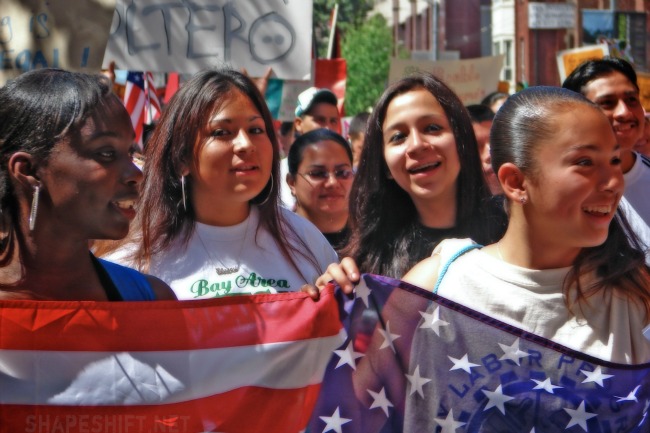The good news about Latino millennial voters, tucked under a stack of numbers

By Victor Landa, NewsTaco
[tweet_dis]Forty-four percent of eligible Latino voters are millennials.[/tweet_dis]There’s good news in that, but it’s hiding under the bad news that’s tucked under the obvious news. So let’s take this by levels.
First.
Everyone wants the millennials – they’re the reason Univision just bought The Onion; Latino millennials are a large and growing market, it’s why marketers spend so much money on them; it’s why experts spend so much online space explaining how to sell to them. So when the Pew Research Center announced that 44 percent of Latino voters are in the coveted 18 to 35 bracket, political operatives salivated.
Numbers tell stories. So I took some of the findings of the Pew Center study and laid them out in a way that paints a picture:
- 27 million – The number of U.S. Latinos eligible to vote in 2016.
- 17 – The percentage increase of eligible Latino voters since 2012.
- 3.2 million – The number of Latinos who turned 18 years of age between 2012 and 2016.
- 44 – The percentage of millennials* among projected eligible Latino voters for 2016.
- 48 – The turnout rate for Latino millennials in 2012.
- Slightly less than 50 – The Latino voter turnout rate in 2008.
- 48 – The Latino voter turnout rate in 2012.
- 27 – The Latino voter turnout rate in the 2014 midterms.
- 43 – The percentage of eligible Latino voters between the ages of 18 and 35 in 2000, 2008 and 2012.
- 52 – The percentage of the U.S. Latino population that is ineligible to vote either because they are too young or because they are not citizens.
- 52 – The percentage of eligible Latino voters who live in California, New York and Texas.
This brings me to the second point, or level, if you will.
[pullquote]Don’t expect Latino millennials to be different from other millennials.[/pullquote]Second.
Millennials don’t vote – or rather, they don’t vote to their potential. So don’t expect Latino millennials to be different, or to sway an election anytime in the near future. That’s the bad news.
But before we start criticizing today’s young voters, let’s make sure we understand that they’re not different from 18 to 35 year-old’s of the past – look at the ninth item on the above list, they didn’t vote much either. Add the fact that the majority of Latino millennials are closer to 18 than they are to 35 and you have the continuation of a historic trend. There are a lot of Latino millennials, they make-up a large part of the Latino electorate, and they don’t really vote in those large numbers.
[pullquote]Latino voter turnout in 2024 will be huge.[/pullquote]Third.
But they will, and that’s the third level, the good news buried under so many layers of numbers. [tweet_dis]The 18 to 35 year-old Latinos of today will be the voting 35 to 50 year-olds of tomorrow.[/tweet_dis] More of them will vote in 2020, and watch out for the turnout in 2024 – it’s going to be huge.
This isn’t to say that Latinos won’t be a significant factor in this year’s presidential election. Every pundit, observer and political operative says that a candidate can’t get to the White House without the Latino vote. There’s another set of numbers that bears that truth, and millennials will be a big part of the Latino voting power this year.
But let’s not get carried away by the Pew study. It’s good to know these numbers, because they’re true. And it’s also good to keep in mind that [tweet_dis]Latino millennials are proving to act more like their age cohort when it come to voting – they may be Latinos, but they’re millennials too.[/tweet_dis]
If I were advising a political campaign I’d tell them to spend their time and energy on Latino millennnial voter registration and mobilization, and leave the advertising money to the sure-voter 35+ crowd.
*Millennials – born in 1981 or later (18 to 35 year-olds)
[Photo by Rose Trinh/Flickr]

